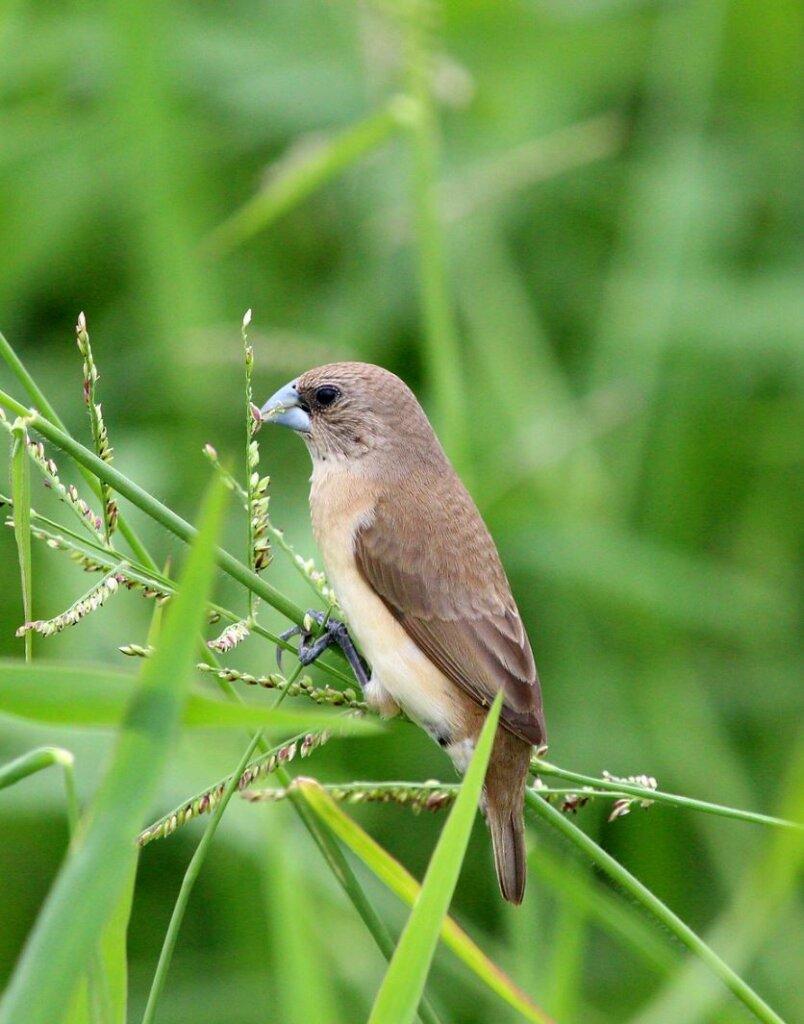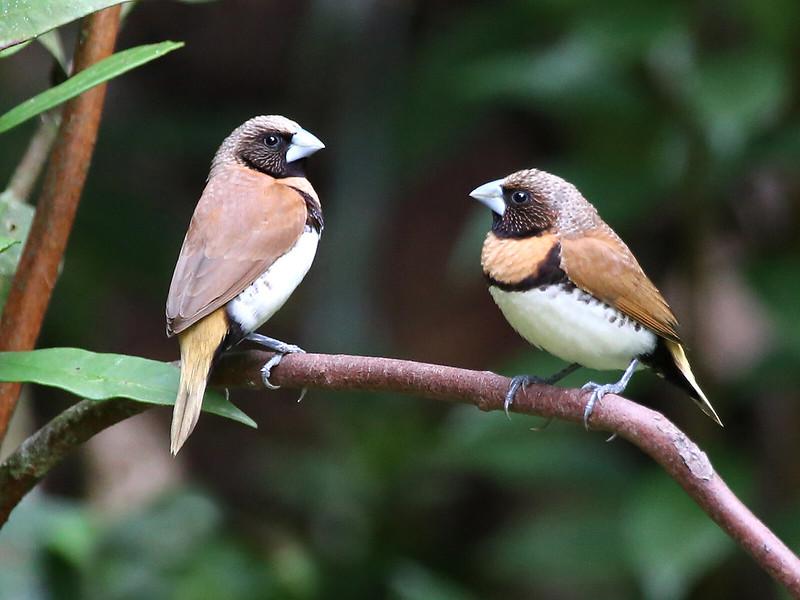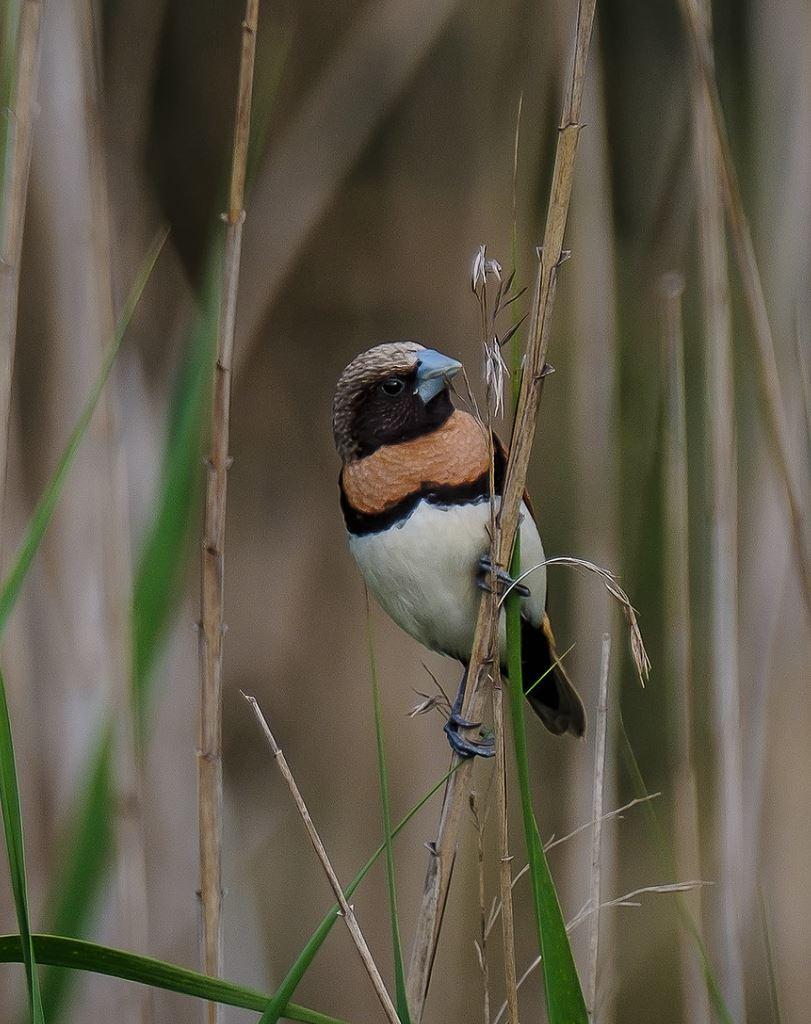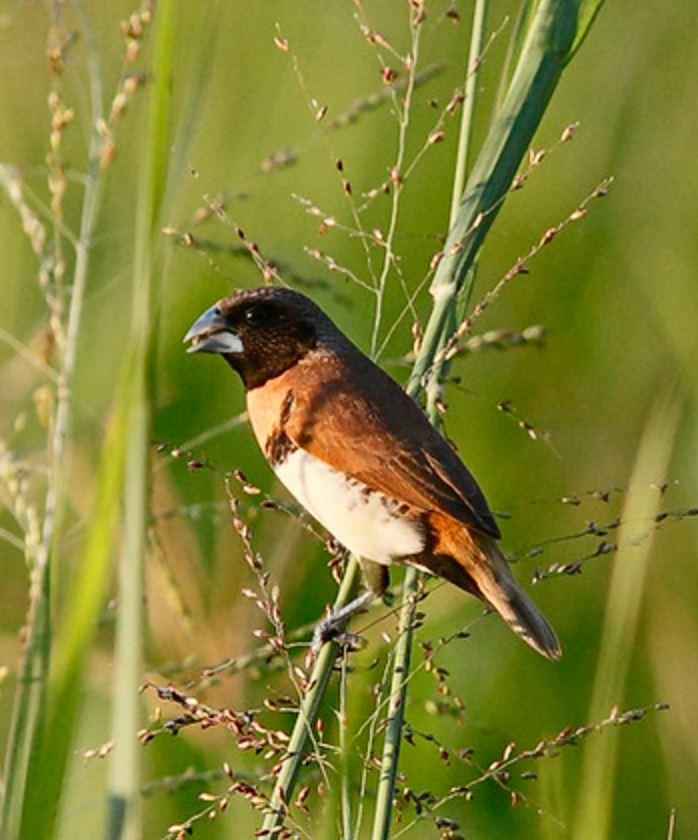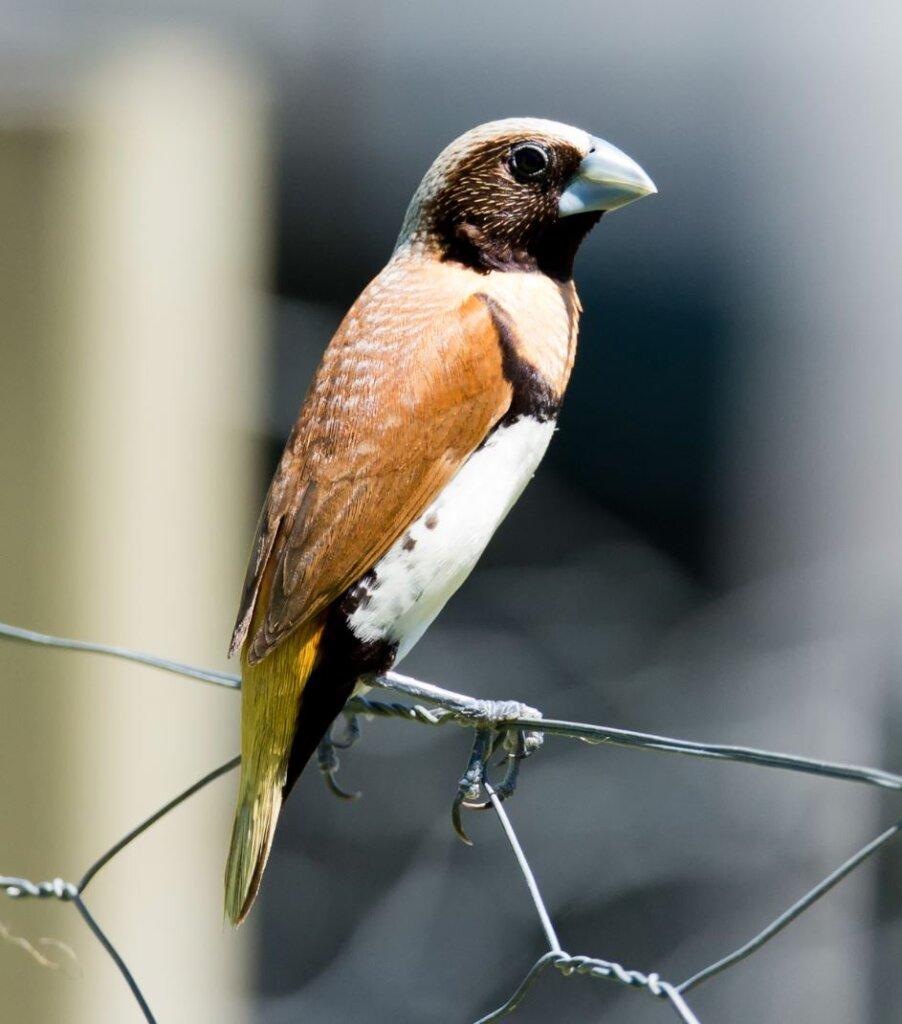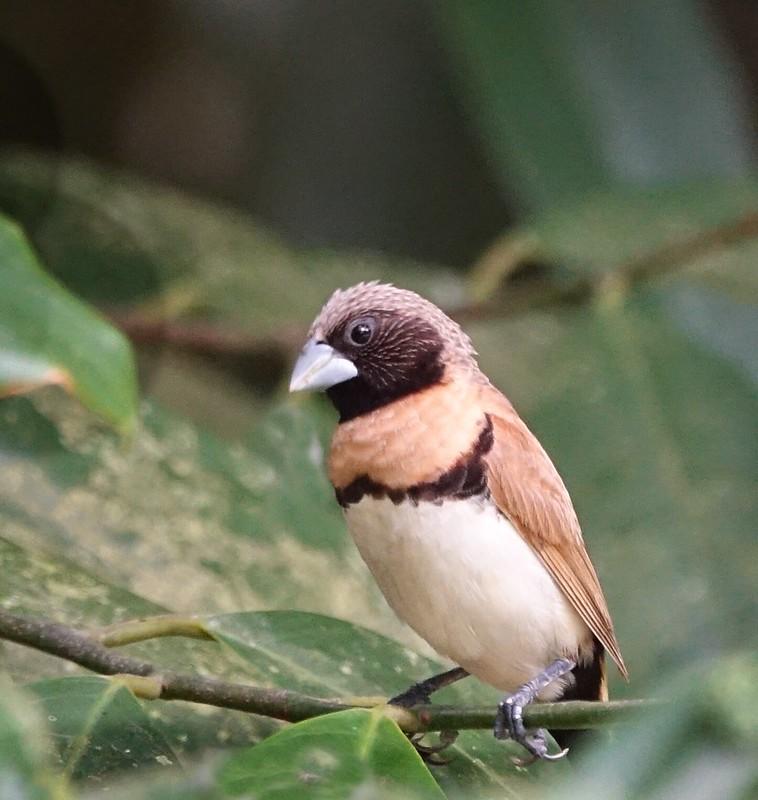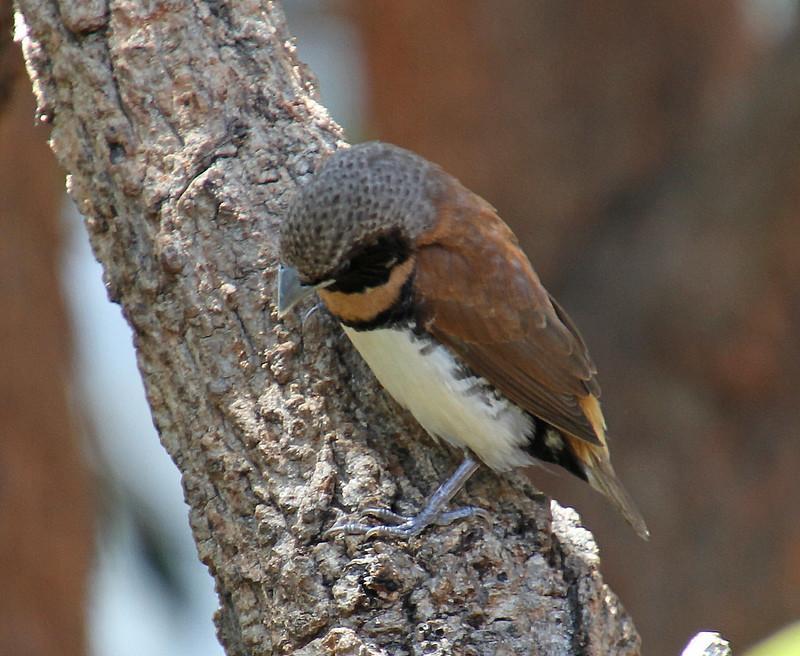The Chestnut-Breasted Mannikin (*Lonchura castaneothorax*), also known as the Chestnut-Breasted Munia or Bully Bird, is a compact, brown-backed bird with a black face, sturdy bill, and grayish crown and nape. Its crown is gray, its breast is chestnut, demarcated from the white underparts by a black bar. The rump and tail exhibit a vivid shade of golden orange, contrasting with the black undertail.
Females appear paler in comparison to males, with males being uniformly olive-brown above and pale below, featuring a brown-buff tone without the black face or chest bar.
This species is found in and is endemic to Australia, New Caledonia, Indonesia, and Papua New Guinea.
The Chestnut-Breasted Mannikin prefers habitats such as reed beds, rank grasses along rivers, swamps, grassy plains, and mangroves. It also frequents cane fields and cereal crops. During dry seasons, it is observed in arid areas, always in proximity to water sources.
Being a seed lover, these birds enjoy consuming barley seed and millet, and they have been observed feeding on wild sugar cane in Papua New Guinea.
Throughout the breeding season, these birds nest in colonies, relatively close to each other, within grass clumps, approximately 2 meters from the ground. The nest, made from green or dried grass blades, is lined with finer grass. Both the male and female partake in building the nest, incubating the eggs, and nurturing the young.
Due to its extensive range, this species does not meet the criteria for being classified as Vulnerable under the IUCN size criterion.
